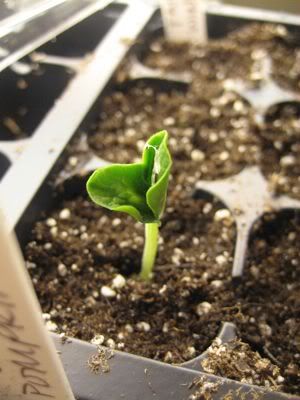Cucurbita spp.: Squash provides the home gardener a wide range of colors, shapes, flavors and culinary uses. Summer squashes, from the very brightest yellow to the darkest green, and winter squashes of all descriptions, bring endless enjoyment to the garden and the kitchen. In our breeding and selection work we look at many varieties, both new and old, to bring you the very best. Heat-loving and requiring a long, sunny growing season to fully mature.
CULTURE: Squash and pumpkins prefer good fertile soil and plenty of sunshine. Start indoors or in a greenhouse 3 weeks prior to your last frost. Sow in a 3 inch peat pot or jiffy pot for direct transplanting. For best results transplant prior to the second set of true leaves. Work 1 cup of our complete fertilizer into the soil around each plant. For direct sowing, plant after your last frost and when the soil has warmed to at least 60°F. Optimum soil temperature for germination: 65-80°F. Days to germination: 5-10. Sow 1 inch deep and 24 inches between bush varieties, 36 inches between vining varieties. Squash needs just-barely-damp soils to germinate. Too much moisture causes the seed to rot. All squash are monoecious (bearing separate male and female flowers on the same plant), and require bee and insect activity for successful pollination. Poor fruit set is often the result of poor pollination.
INSECTS/PESTS: The major insect pests are the spotted and striped cucumber beetles, vine borers and squash bugs. Use row covers and/or apply Rotenone to reduce and control damage. Butternut varieties have a solid stem and are resistant to vine borer damage.
DISEASES: Squash are susceptible to a number of fungal, bacterial, and viral diseases that vary between regions. Your local county extension agent can help you pinpoint your particular problem.
HARVEST: Pick baby summer squash as well as the more mature ones. In general, summer squash are most tender and flavorful when very young. Winter squash are best left on the vine until fully mature. It should require quite a bit of pressure before your fingernail pierces through the rind into the flesh. For the best sugar content, cut the stem an inch or so from the body after the first light frost, and if the weather is dry, let them cure in the field. If temperatures drop below 25°F, bring your harvest inside and store in a cool dry location.
SEED SPECS: Minimum germination standard: 75%. Usual seed life: 3-4 years. Days to maturity: from date of direct seeding; if transplanting, subtract 10 days.
Seeds per gram listed below by type; 28 grams per ounce.
----------
PURCHASED: 3g from Territorial Seed Co. Feb '09. $4.55
STARTED SEED: Planted seeds on 3/22. They came up on 3/24. Two days! How crazy is that?
HARDENED OFF:
TRANSPLANTED IN GARDEN:
DISEASE ISSUES: Powdery mildew but it came back and didn't die like some of the other squash vines (pumpkin).
INSECT ISSUES: Face was mottled by something? Slugs? Seems eatable still.
HARVEST YEILD & DURATION: Harvested early October though could've gone longer if I let it. Great yeild. Two plants yielded about 14 squash.
OTHER NOTES:
3/24/09

7/27/09

No comments:
Post a Comment